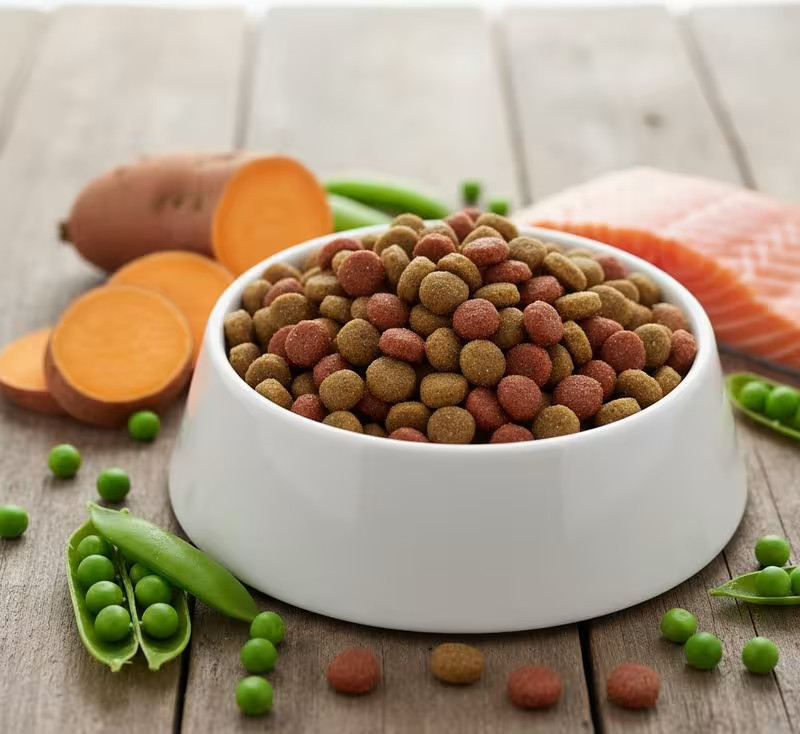The Ultimate Guide to Dog Food for Allergies and Itching: Expert Recommendations and Insights

Are you struggling to find the right dog food for your furry friend who suffers from allergies and itching? You're not alone. Many dog owners face this challenge, and it's essential to choose a diet that alleviates symptoms while providing optimal nutrition. In this comprehensive guide, we will explore the best dog food options, analyze popular brands, and answer common questions related to dog food allergies.
Understanding Dog Allergies and Itching
Dog allergies can manifest in various forms, including food allergies, environmental allergies, and contact allergies. Symptoms often include itching, rashes, and gastrointestinal issues. It's crucial to identify the triggers and select a suitable diet to manage these symptoms effectively.
Common Causes of Dog Allergies
- Food Ingredients: Proteins like chicken, beef, or grains can trigger allergies.
- Pollen and Dust Mites: Environmental allergens can exacerbate itching.
- Flea Bites: Flea allergies can lead to severe itching and discomfort.
What to Look for in dog food for allergies
When selecting dog food for allergies and itching, consider the following factors:
- Limited Ingredients: Foods with fewer ingredients reduce the risk of allergic reactions.
- High-Quality Proteins: Look for novel protein sources like duck or salmon.
- Grain-Free Options: Some dogs are sensitive to grains, so grain-free options may be beneficial.
Top Brands for Dog Food for Allergies and Itching
Based on extensive research and popularity among pet owners, here are five top brands to consider:
1. Purina Pro Plan Veterinary Diets

Protein: 26% Fat: 16% Fiber: 4% Price: $2.50/lb
Key Ingredients: Salmon, potato, and sunflower oil.
- Pros: Highly digestible, specifically formulated for food sensitivities.
- Cons: Higher price point.
2. Hill's Prescription Diet Z/D

Protein: 24% Fat: 14% Fiber: 4.5% Price: $3.00/lb
Key Ingredients: Hydrolyzed chicken protein, corn starch, and tapioca.
- Pros: Clinically proven results for food allergies.
- Cons: Requires a veterinary prescription.
3. Blue Buffalo Basics

Protein: 24% Fat: 14% Fiber: 4% Price: $2.20/lb
Key Ingredients: Turkey, potatoes, and peas.
- Pros: Limited ingredient formula, affordable price.
- Cons: Some dogs may prefer different protein sources.
4. Royal Canin Hydrolyzed Protein

Protein: 21% Fat: 12% Fiber: 3% Price: $3.50/lb
Key Ingredients: Hydrolyzed soy protein, corn, and rice.
- Pros: Excellent for dogs with severe food allergies.
- Cons: Higher cost and limited availability.
5. Natural Balance L.I.D.

Protein: 22% Fat: 10% Fiber: 5% Price: $2.00/lb
Key Ingredients: Duck, potato, and carrot.
- Pros: Affordable and effective for many dogs with allergies.
- Cons: Some dogs may not like the taste.
How to Transition to New Dog Food
When switching your dog's food, it's crucial to do so gradually to avoid gastrointestinal upset. Follow these steps:
- Start by mixing 25% of the new food with 75% of the old food.
- Gradually increase the new food ratio by 25% every few days.
- Monitor your dog for any adverse reactions throughout the transition.
Frequently Asked Questions (FAQ)
What are the best dog food brands for allergies and itching?
The best brands include Purina Pro Plan, Hill's Prescription Diet, Blue Buffalo, Royal Canin, and Natural Balance, each offering unique formulas designed for dogs with allergies.
How do I know if my dog has a food allergy?
Common signs include itching, gastrointestinal upset, and skin irritations. Consulting with a veterinarian is recommended for an accurate diagnosis.
Can I make homemade dog food for allergies?
Yes, homemade dog food can be an option, but it is essential to consult with a veterinarian or pet nutritionist to ensure complete and balanced nutrition.
Conclusion
Choosing the right dog food for allergies and itching can significantly improve your dog's quality of life. By understanding the causes of allergies, knowing what to look for in dog food, and selecting reputable brands, you can help your dog feel more comfortable and healthy.

 By
By
I know high-quality, limited-ingredient foods can be more expensive upfront. Does this guide offer any tips on how to manage the cost over time, or perhaps suggest budget-friendly brands that still meet the novel protein/grain-free criteria without sacrificing nutritional quality?
For those who've successfully transitioned their dog to an allergy-friendly food as recommended in this article, how long did it take to see significant improvement in symptoms like itching and rashes? I'm just starting this journey and curious about the typical timeline for results.